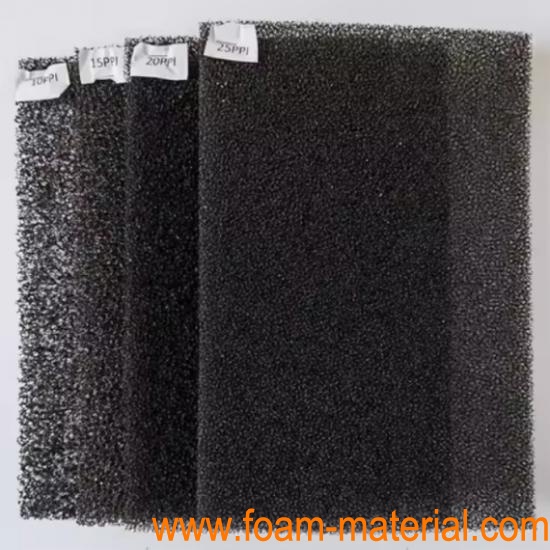Xiamen Zopin New Material Limited Established in 2011, it is a new material industry with capabilities of independent research & development, production and sales as one. Our ISO9001:2012 factory covers an area of 6 hectares and a building area of 28,000 square meters, with annual production of high-performance metal foams of 250,000 square meters. Our R&D team is composed of academicians and experts from Tsinghua University, Polytechnic University of Hong Kong, Nanyang Technological University, and other domestic and foreign metal foam professionals. After many years’ endeavor, we now own our proprietary intellectual property rights in manufacturing high purity and high porosity metal foams.
Carbon Foam Batteries for Sale: Options, Suppliers, and Considerations
If you're looking to purchase carbon foam batteries, it's important to understand the market landscape, available suppliers, and key factors to consider before making a purchase. Below is a comprehensive guide to help you navigate the process.
●1. Types of Carbon Foam Batteries Available
Carbon foam batteries are designed for various applications, including energy storage, electric vehicles (EVs), consumer electronics, and industrial systems. Here are some common types:
A. LithiumIon Carbon Foam Batteries
Description: Use carbon foam as an electrode material to enhance energy density, charging speed, and cycle life.
Applications: EVs, grid storage, portable electronics.
Key Features:
High energy density.
Fast charging capabilities.
Long lifespan.
B. SodiumIon Carbon Foam Batteries
Description: Utilize sodium ions instead of lithium, with carbon foam electrodes for improved performance.
Applications: Stationary energy storage, lowcost alternatives to lithiumion.
Key Features:
Lower material costs compared to lithiumion.
Suitable for largescale applications.
C. Supercapacitors with Carbon Foam Electrodes
Description: Incorporate carbon foam to increase surface area and improve power density.
Applications: Rapid charge/discharge systems, regenerative braking, backup power.
Key Features:
High power density.
Extremely fast charging.
Millions of charge/discharge cycles.
D. Fuel Cells with Carbon Foam Supports
Description: Use carbon foam as a support structure for catalyst layers in fuel cells.
Applications: Automotive, aerospace, stationary power generation.
Key Features:
Enhanced durability and efficiency.
Lightweight design.
●2. Key Factors to Consider When Buying Carbon Foam Batteries
A. Performance Requirements
Energy Density: Higher energy density means longer runtime for devices.
Power Density: Higher power density enables faster charging and discharging.
Cycle Life: Longer cycle life reduces replacement costs over time.
Temperature Stability: Ensure the battery operates efficiently in your desired temperature range.
B. Cost
Initial Cost: Carbon foam batteries may have higher upfront costs due to advanced materials and manufacturing processes.
Total Cost of Ownership (TCO): Consider the longterm savings from improved performance and durability.
C. Supplier Reputation
Choose suppliers with proven track records in producing highquality batteries.
Look for certifications such as ISO, UL, or IEC standards.
D. ApplicationSpecific Needs
Tailor your selection based on the specific requirements of your application (e.g., EVs, grid storage, consumer electronics).
●3. Suppliers of Carbon Foam Batteries
Here are some companies and research institutions that produce or develop carbon foam batteries:
A. Established Battery Manufacturers
Tesla Energy: Offers advanced lithiumion batteries that incorporate carbonbased technologies.
LG Chem: Develops highperformance batteries for EVs and energy storage systems.
Samsung SDI: Produces lithiumion batteries with enhanced carbon materials.
B. Specialty Carbon Foam Battery Producers
Graphene Solutions: Specializes in hybrid carbon materials for energy storage.
Porvair Advanced Materials: Provides carbon foam solutions for aerospace, automotive, and industrial applications.
XG Sciences: Focuses on grapheneenhanced materials for battery applications.
C. Research Institutions
Universities and research labs like MIT, Stanford, and Tsinghua University collaborate with industry partners to commercialize carbon foam battery technologies.
D. Online Marketplaces
Platforms like Alibaba, Amazon Business, and ThomasNet list suppliers offering carbon foam batteries or components.
Carbon Foam Battery Price
●4. Estimated Pricing for Carbon Foam Batteries
Pricing varies depending on the type of battery, capacity, and supplier. Below are rough estimates:
| Battery Type | Estimated Price per kWh | Notes |
||||
| LithiumIon Carbon Foam | $100–$300/kWh | Highperformance batteries for EVs and grid storage. |
| SodiumIon Carbon Foam | $80–$250/kWh | Costeffective alternative for largescale applications. |
| Supercapacitors with Carbon Foam| $50–$200/kWh | Ideal for rapid charge/discharge applications. |
| Fuel Cells with Carbon Foam | $500–$1,500/kW | Used in specialized applications like aerospace and automotive. |
●5. Where to Buy Carbon Foam Batteries
A. Direct from Manufacturers
Contact established battery manufacturers or specialty producers directly for bulk orders or custom designs.
B. Distributors and Resellers
Many distributors specialize in energy storage solutions and can provide carbon foam batteries tailored to your needs.
C. Online Platforms
Alibaba: Offers a wide range of carbon foam batteries from global suppliers.
Amazon Business: Provides access to smaller quantities for testing or prototyping.
ThomasNet: Connects buyers with U.S.based suppliers.
D. Trade Shows and Conferences
Attend industry events like Battery Show, Energy Storage Expo, or CES to meet suppliers and explore new products.
●6. Customization Options
Many suppliers offer customization services to meet specific application requirements. Common customization options include:
Capacity and Voltage: Adjusted based on your energy needs.
Form Factor: Designed to fit specific device dimensions.
Chemistry: Tailored for optimal performance in your operating conditions.
●7. Tips for Purchasing Carbon Foam Batteries
A. Verify Specifications
Ensure the battery meets your performance, safety, and regulatory requirements.
B. Request Samples
Before placing a large order, request samples to test performance and compatibility.
C. Negotiate Contracts
Work with suppliers to negotiate pricing, delivery schedules, and warranty terms.
D. Stay Updated
Keep up with advancements in carbon foam battery technology to ensure you're purchasing the latest innovations.
●8. Conclusion
Carbon foam batteries represent a cuttingedge solution for highperformance energy storage, offering advantages such as improved energy density, faster charging, and longer lifespan. While they may have higher upfront costs, their superior performance and durability make them a worthwhile investment for many applications.
If you're ready to purchase carbon foam batteries, carefully evaluate your options, consult reputable suppliers, and consider customization to meet your specific needs. For further details or assistance, feel free to ask!
